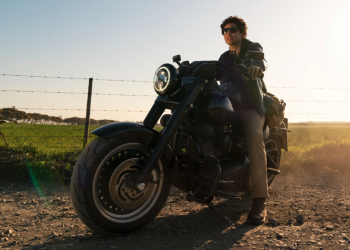Introduction
Riders have choices: filtered plugs that preserve clarity, full-stop plugs that block most sound, and motorcycle earbuds that let you listen to music or navigation. Each has clear strengths and trade-offs. What this really means is you should choose based on how you ride, not on marketing. This comparison breaks down real-world performance, comfort, safety implications, and when to use each approach so you can pick the best motorcycle earplugs or audio solution for your needs.
What filtered plugs deliver in practice
Filtered plugs aim to reduce harmful noise evenly while keeping the character of environmental sounds. That preserves speech and warning tones so you stay aware and protected. For most commuters and tourers, they hit the sweet spot: less fatigue on long rides and fewer trade-offs in situational awareness.
If you want to balance protection with the ability to hear horns and voices, filtered plugs are often the best motorcycle earplugs for everyday use. They let you enjoy lower music volumes when paired with helmet audio and maintain clarity on multi-hour trips.
What full-stop plugs change about the ride
Full-stop plugs deliver strong attenuation and make riding feel significantly quieter. That can be a blessing for short, intense sessions like track days or quick high-speed runs. The downside is reduced ability to detect important external cues, which matters in traffic and group riding.
For short bursts where external awareness is less critical, full-stop options can protect your ears effectively. But for daily road use, many riders find they prefer a filtered approach because it keeps them safer and more connected.
Motorcycle earbuds and in-helmet audio systems
Earbuds and helmet speakers let you listen to music and navigation, but they work best with some level of ear protection. Using earbuds alone in a noisy helmet environment often forces unsafe playback levels. When paired with good protection, earbuds and transducers provide clear audio at lower volumes.
If you prioritize audio on rides, choose rider-specific earphones or transducers designed for helmet use. Combine them with the best motorcycle earplugs for your riding style and you reduce the temptation to crank volume to unsafe levels.
Comfort and long-term wearability
Comfort dictates what you’ll actually use. Filtered silicone tips and custom molds usually win on long rides because they tolerate sweat and hold a seal. Foam full-stop tips can be comfortable for short periods but may degrade over a long tour.
If you ride long distances often, the best motorcycle earplugs for you are the ones you forget about. Comfort becomes the deciding factor, not purely attenuation numbers.
Situational awareness and safety trade-offs
Filtered plugs preserve the cues you need in traffic, which reduces the chance you’ll miss a horn or an approaching emergency vehicle. Full-stop plugs reduce the whole soundscape and can make you less responsive in chaotic environments.
When safety matters most, filtered options paired with a well-fitting helmet often offer the optimal trade-off. For controlled environments or short track sessions, full-stop plugs serve a purpose, but use them understanding the trade-offs.
Practical pairing: how to mix and match
A common approach is to use filtered plugs for daily riding and carry full-stop plugs for short exposures where isolation is preferred. If you use audio, pair it with filtered plugs so you keep playback lower and clearer. Custom molds that accept exchangeable filters offer a flexible platform for mixing approaches without changing fit.
If you need to switch quickly, keep a small case with both types and choose based on the day’s route. That pragmatic strategy gives you protection suited to each situation rather than a one-size solution.
Maintenance, replacement, and lifecycle costs
Full-stop disposable foam is cheap but needs frequent replacement. Filtered silicone tips last longer and filters can be replaced when needed. Custom molds cost more up front but often save money and hassle over years if you ride a lot.
Think in terms of total lifecycle cost and comfort. The best motorcycle earplugs over the long term often come from durable options that pair well with your helmet and audio gear.
Real-world testing tips
Test each solution on the same route at typical speeds. Note fatigue, clarity of speech, and whether you heard horns and navigation prompts. Check comfort after two and four hours. That real-world data helps you choose what works for you rather than relying on lab specs.
If you cycle between city and highway riding, try interchangeable filters or a two-set system so you can adapt quickly.
Conclusion
There is no universal winner, only the right tool for the ride. Filtered plugs are the practical everyday choice for most riders because they protect hearing while keeping you connected to the road. Full-stop plugs make sense for short high-noise exposures, and motorcycle earbuds shine when paired with proper protection. Match your choice to the route, climate, and duration of your rides. Test in real conditions, prioritize comfort, and carry backups. Do that and you’ll find the best motorcycle earplugs for your style, protection that actually improves every ride rather than complicating it.














